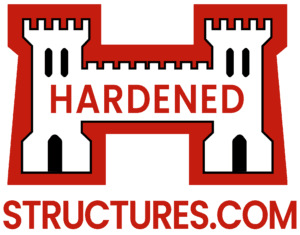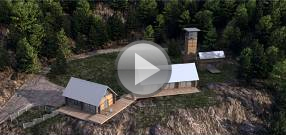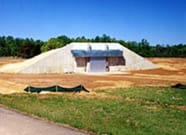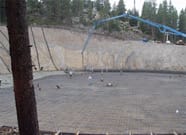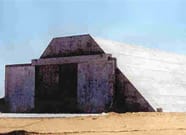Survival Shelters for TEOTWAYKI
Hardened Structures is A World Leader for TEOTWAYKI Mitigation Survival Shelter Design, Engineering, and Construction.
We have successfully completed many TEOTWAYKI shelters, have more currently underway, and are also working with TEOTWAYKI book authors and experts on their own TEOTWAYKI survival shelter projects.
As a specific Threat Event, the anticipated catastrophic effects resulting from TEOTWAYKI are far greater than the anticipated effects from WMD’s, anarchy, climate change or any of the other specific Threat Events for which we have developed mitigation designs.
In general, the shelter should have independent sources of water, sewage, fuel, electricity, HVAC, food and supplies and all critical systems must include two back-up redundant systems. In some circumstances, the shelter location should be concealed from view and, to the extent reasonable, all air intakes/exhausts are to be camouflaged. The shelter should incorporate a minimum of two secret emergency exits. The design and construction of the shelter must be in accordance with the International Building Code (IBC).
Survival Shelter and Threat Assessment:
While the survival shelter will be designed and constructed to mitigate the anticipated effects of a TEOTWAYKI scenario, no one knows for certain what, if anything will actually occur. However, most engineers and scientists agree that for a fully protected TEOTWAYKI survival shelter the following threats must be mitigated:
- 3-Bars blast overpressure of 45 psi
- Force 10 earthquakes in succession
- 450 mph winds
- Extreme gamma & neutron attenuation from a 100 megaton air burst detonated 20 miles away
- Solar flares with 1,000,000 volt EMP
- Flooding (complete submersion for 100 hours)
- Extreme external fires at 1250 F for 10 days
- Magnetic pole shift
- Radiological, chemical and biological weapons
- Forced entry and armed assaults
- 12′ of snow and 10′ of rain
- 500 lb. hail stones or flying debris at a speed of 100 mph
The survival shelter will generally function as a stand-alone underground “HARDENED” Structure. Self Rescue supplies and Emergency Escape man-ways and extraction procedures should be considered in the basic design – which will allow radical movement of the structure in extreme surface conditions.
If this survival shelter is forced to the surface it must be capable of surviving all of the above threats absent the protection of earth coverage. Post Attack Recovery Plans specific to the facility’s function/capabilities are to incorporate the anticipated after-effects of the Threat Event and allow for occupant survival and sustainability.
Our 30 years experience as engineers, architects and project managers in the shelter design/build industry has convinced us that the possible effects from a catastrophic TEOTWAYKI Threat Event demands a Shelter Protection Program of a Herculean nature.
